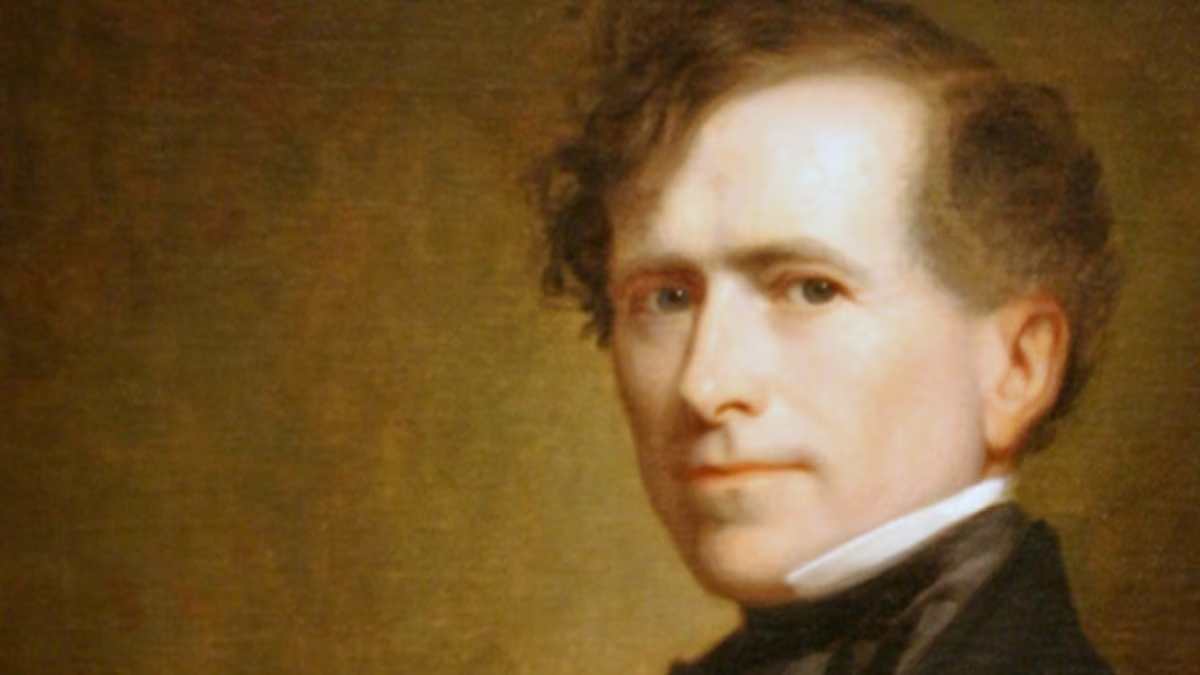The Election of 1852 was a watershed moment in American history as Franklin Pierce faced off against General Winfield Scott and John P. Hale in a three-way contest for the presidency. Let’s dive in!
Background Info
Zachary Taylor, the 12th President of the United States, won the 1848 election. Despite his vague political views, some historians believed he was willing to compromise on the issue of slavery and even threatened to hang those who tried to break up the Union. Unfortunately, Taylor’s presidency was cut short when he died just over a year into his term, allegedly from cholera after consuming raw fruit and ice-cold milk. The White House water, which had previously contributed to the death of William Henry Harrison, Taylor’s predecessor James K. Polk, and other presidents, was suspected to be the cause.
Taylor’s vice president, Millard Fillmore, was then sworn in as the 13th President. Fillmore, unlike Taylor, chose to support the Compromise of 1850, which aimed to address the escalating tensions between free and slave states. However, one of the bills in this compromise, the Fugitive Slave Law, allowed for the return of escaped slaves and worsened divisions between the North and South.
The Democrats’ Compromised Candidate
At the Democratic Party’s convention, several candidates vied for the nomination:
- Stephen Douglas, Senator from Illinois
- Lewis Cass, Senator from Michigan who had run against Taylor in 1848
- James Buchanan, Senator from Pennsylvania
- William L. Marcy, Secretary of War
After 49 ballots, the convention turned to a “dark horse” candidate to break the deadlock: Franklin Pierce, a former Senator and Representative from New Hampshire. Pierce’s relative obscurity made his views on slavery uncertain, which was appealing to many in the party. He was nominated with William Rufus DeVane King, a Senator from Alabama, as his running mate. King’s Southern roots helped balance the ticket and made Pierce more acceptable to Southern Democrats, who referred to him as “A Northern Man with Southern Principles.”
The Whigs on the Rocks
By the 1850s, the Whig Party was struggling, especially after the controversial Fugitive Slave Law and the death of party founder Henry Clay. At their nominating convention, the Whigs went through 53 ballots before selecting their candidate. Millard Fillmore, who hoped to secure the nomination, only gained support from the party’s Southern faction. The Northern faction backed Winfield Scott, a Mexican-American War hero, while a small group supported Daniel Webster.
Ultimately, Scott won the nomination with 159 delegates to Fillmore’s 112. William Alexander Graham, Secretary of the Navy from North Carolina, was chosen as Scott’s running mate.
The Free Soil Party
The Free Soil Party, an anti-slavery group that had gained prominence in 1848, saw a decline in support after the Compromise of 1850. The party nominated John Parker Hale, an anti-slavery Senator from New Hampshire, with George Washington Julian as his running mate. Despite their previous strong performance, the party struggled to make an impact in this election.
The Other Third Parties
Other third parties included the Liberty Party, Southern Rights Party, and Union Party. The Union Party, a splinter group of Whigs dissatisfied with Scott and Fillmore, nominated Daniel Webster and Charles J. Jenkins. The Know-Nothing Party also nominated Webster, but he declined, citing their nativist stance.
The Campaigns
Both Pierce and Scott had served in the Mexican-American War, with Scott leading the U.S. forces to victory and Pierce serving under him. Despite their military backgrounds, neither party took a strong stance on slavery, making the election a popularity contest. This lack of differentiation, coupled with the presence of third parties, led to a significant drop in voter turnout.
The Election of 1852 Results
The election results were a decisive win for Franklin Pierce, who became the 14th President with 254 electoral votes and 50.8% of the popular vote. Winfield Scott, despite his military credentials, only secured 42 electoral votes and 43.9% of the popular vote, marking the Whig Party’s worst performance to date. John P. Hale received no electoral votes and only 4.9% of the popular vote, leading to the dissolution of the Free Soil Party.
Daniel Webster, who came in fourth with 0.2% of the popular vote and no electoral votes, had passed away shortly before the election. His posthumous votes highlighted voter dissatisfaction with the main candidates. William R. King, the newly elected vice president, died from tuberculosis just six weeks into his term, having the third-shortest vice presidency in U.S. history.
Pierce’s presidency was marred by personal tragedy and would eventually contribute to the growing tensions leading to the Civil War. The 1852 election marked the end of the Whig Party and was the last time the Democrats would win a majority of both the electoral and popular votes until the 1930s.
And that concludes the election of 1852. Franklin Pierce entered the White House with personal and political challenges, setting the stage for the escalating conflicts of the 1850s. The next article will cover the election of 1856.
